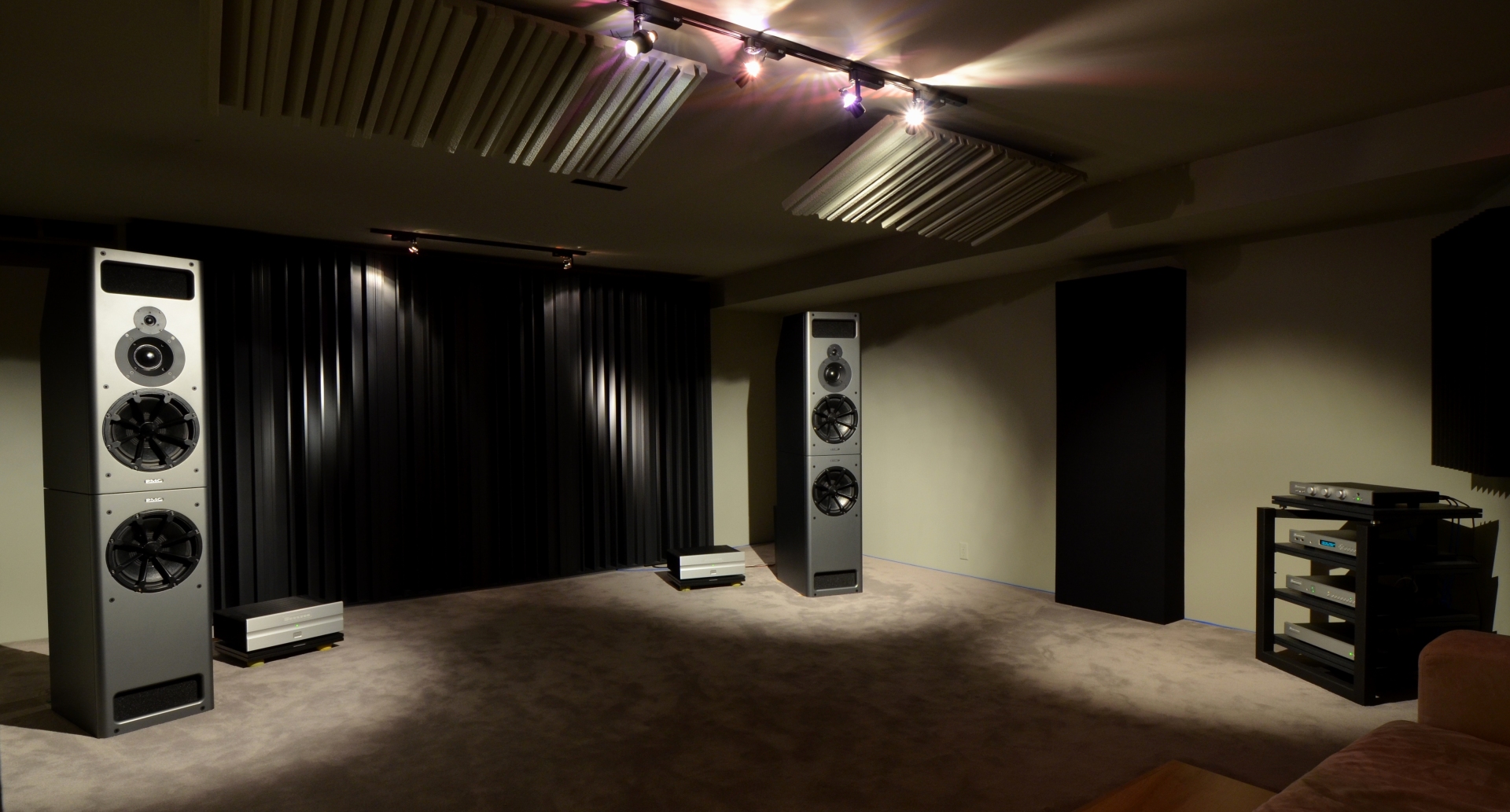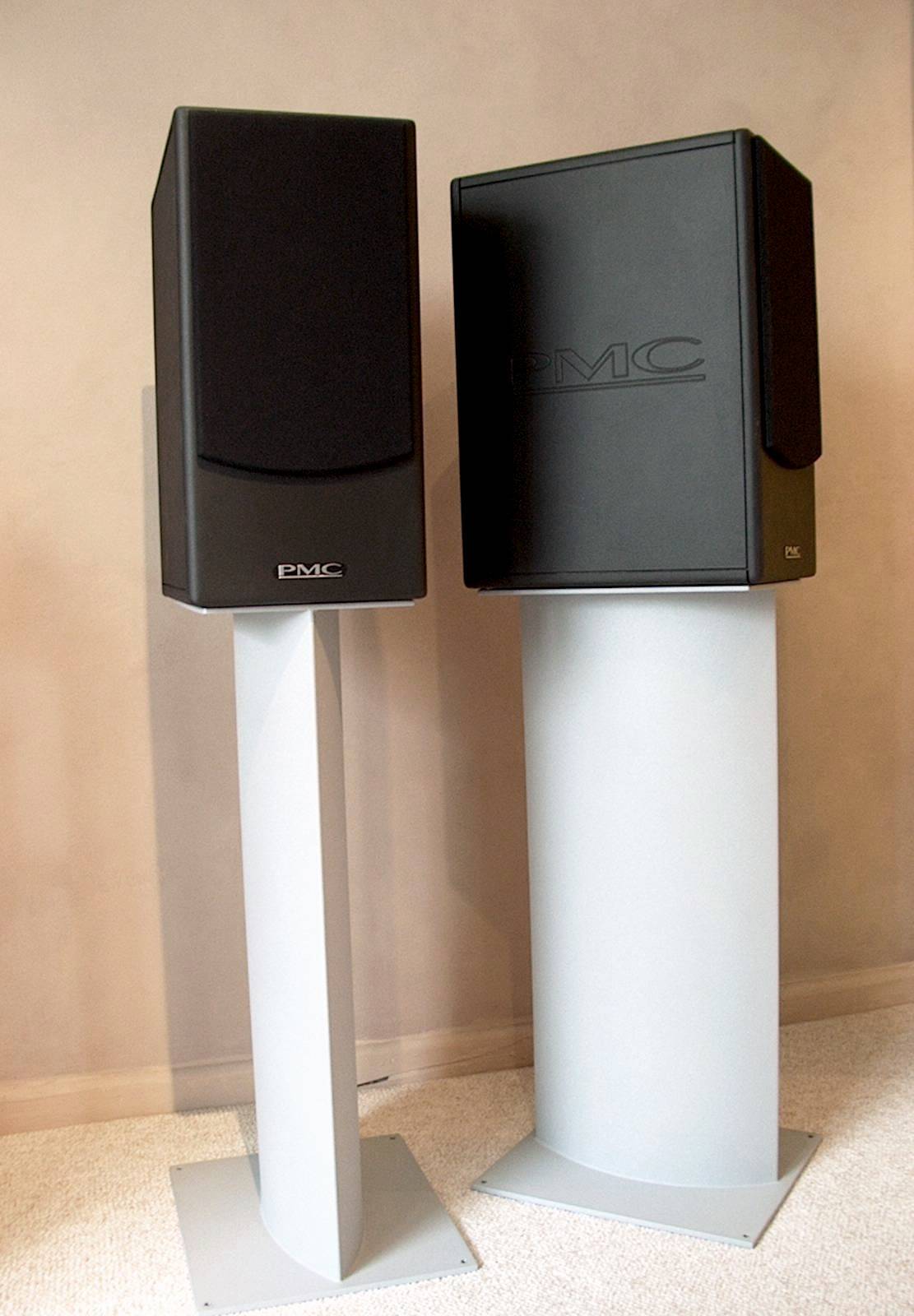about
Message
SCROLL BELOW
Bio
Music in one way or another is part of the human experience whether consciously realized or not. Music expresses a range of emotions as great as there are colours in the universe. It is the universal language between us, and can affect our physical and spiritual well being. No matter the sound of a single solo instrument or full orchestra, its power and influence cannot be denied.
The passion for music drives the audio industry in creating some impressive components to reproduce it as faithfully as possible. The equipment you choose should not only connect you at an emotional level but be able to virtually transport you to the venue itself. A fine audio system and designed room is a means to do just that, to experience the performance as if you were there…
It has always been my goal to recreate that experience to
this level. Using my experience I will help choose the proper components & design a soundroom or home theatre to achieve this auditory experience.
Gary di Tomasso
Montreal born Gary di Tomasso, founder of Design Progression, began his career working with prominent graphic design studios including Bryan Mills & Associates, Strategies International, Southam Communications and was also Art Director of the Inner Ear audio magazine for its many years.
Seeing a void of aesthetically pleasing designs in A/V supports, di Tomasso designed a line of Hi-Fi component stands, launched in 1990. Design Progression has since evolved, and in addition to offering a full spectrum of audio and home theater equipment, had expanded to room design. general interior, furniture and fixtures placement, and the considerations around advanced home theatre or sound rooms, make up the strengths of this designer.
Having studied architecture and completing a Design Arts Diploma, di Tomasso decided to combine a life long passion for music with his design skills to create audio visual entertainment environments which optimize performance and aesthetics.




articles
The finer things in life....
I’ve always admired people who appreciate the finer things in life; the ones who know the difference between the everyday and the exquisite.
These people have developed a lifestyle. They have finely honed sense of good taste, and it shows in everything they do and everything they own. They satisfy their sense of sight with beautiful things; designer clothing, fine art, and great architecture. They satiate the senses of taste and smell with fine food and drink. They upholster their furniture with quality fabrics and carpet their floors with the finest wool to titillate their sense of touch. They appreciate quality and think nothing of spending the money to get it.
Sadly, they often overlook the fifth sense. They settle down on their one-of-kind designer couch with a glass of cognac and a Cuban cigar, dim the lights in the penthouse apartment overlooking the water, and turn on the $100 home theatre system they bought from some big box store to listen to some music.
What’s wrong with this picture?
People who happily shell out a hundred thousand dollars for automobile, tens of thousands of dollars for a vacation, or hundreds of dollars for a bottle of fine wine, will, for some bizarre reason, settle for sub-standard audio quality.
There may be a number of reasons for this. However, the most likely reason is a lack of knowledge.
There is a plethora of magazines, websites and television shows that tell you all about cars, clothing, interior design, cigars and fine liquors. Unfortunately, the last ten years has seen a generation decline in the number of resources addressing truly high-end audio. Few magazines have survived the heyday of the 70’s and 80’s. I don’t know if there are TV shows that address the subject in any way.
Designers and (sadly) many architects are clearly blissfully unaware of the subject. They want in-ceiling speakers so as not to detract from the appearance of the room. They will stuff the speakers in a corner behind a couch, or place them in a bookshelf. At no point did their education address the concepts if acoustics. To them, music is something you have on in the background of your life, not something you sit down and actually listen to.
Obviously, if you are reading this article, you are not one of the educated =. You have already discovered a guide to the pinnacle of audio delights. Now the only question is, how much are you willing to invest in this quest for aural gratification?
Due to the power of inflation we have seen a steady decline in what a dollar will buy us. Recent statistics indicate what you could purchase with $20 in 1980 will now (2006) require $50, or 2.5 times as much. We accept this increase cost on most areas of our lives. We know that a fine automobile or truly great dining experience is going to cost more than it did 25 years ago. However, this logic seems to fly out the window when it comes to high-end audio.
Perhaps this is due to the fact that audio products at the other end of the spectrum (pedestrian consumer audio) have actually decreased in price over the last ten years or so. This is primarily due to the employment of cheap overseas labour and “cookie-cutter” electronics. These products use inexpensive mass-market parts that were designed with nothing but a price point in mind. They may have apparently good specifications on paper, but one listen will quickly reveal that they sound like what they are…cheap!
Brash high frequencies complete with boomy, one note bass, and smeared midrange.
The sound is truly horrible, yet the average consumer has come to hear this as “acceptable”.
High-end audio comes at a dear price because it takes a lot of research and development to produce products of outstanding calibre. It’s the same as a top-of-the-line car or perfectly crafted bottle of wine. Time and experience combine with the finest “ingredients’ available to produce a product that transcends the everyday experience.
The reason I keep referring to the price of an automobile is because I think that the investment in your car should be comparable to the investment in your audio system. The car, after all, is merely a tool to get you from point “A” to point “B”.
A high-end audio system will do so much more for you than a mere conveyance will ever do. Quality music reproduced by a quality system transports you beyond the realities of day to day drudgery. It soothes your soul and invigorates you in a way that nothing else can hope to do. Great sound recharges your psychic battery. It lifts you up and takes you away to your own personal state of Nirvana. No matter what you spend on the other epicurean pursuits, they will never conjure up the same kind of inner peace and tranquility as well played music, reproduced on an intelligently assembled audio system.
So please, I beg of you, put your priorities in the proper order. Place aural pleasure at the top of the list, where it belongs. It is the foundation upon which all your other pleasures should rest. The wine will taste better, the leather will feel more supple, the surroundings will appear more elegant…everything will be enhanced in the presence of the best sound reproduction equipment money can buy.
So put down that glass of Bordeaux, get your butt off that fine Italian leather chair, go out and do some research, and then purchase some truly exceptional high-end equipment. Make you life a better one through high quality audio. The rewards are priceless.
Originally published in the Inner Ear Report 2006
Just one of the reasons why PMC Loudspeakers are so special
Technically Speaking
PMC’s unique (Advanced Transmission Line) enclosures have taken loudspeaker design to the highest level, using sophisticated cabinet construction, proprietary drive units, and patented absorption materials and techniques. The benefits are enormous compared to the relatively simple sealed and ported designs currently available elsewhere.
PMC’s innovative approach places the bass driver near one end of a long tunnel (the Advanced Transmission Line). This tunnel is heavily damped with acoustic material specified carefully to absorb the upper bass and higher frequencies radiating from the rear of the bass driver. The lowest frequencies are allowed to pass down the line and emerge from the large vent in the same polarity as the driver’s frontal radiation, the vent acting essentially as a second bass driver.
An important benefit of the approach is that the air pressure inside the cabinet, loading the bass driver, is maintained. This helps to control the driver over a wide frequency range and significantly reduces LF distortion. Consequently, the upper bass and midrange detail is not masked by harmonic distortion and the result is PMC’s characteristically transparent midrange, fast, attacking bass and outstanding clarity.
A further advantage is greater bass extension and loudness than a ported or sealed design of a similar size, even if similar drivers were used. Moreover, the very consistent bass driver loading brings the welcome benefit that the frequency response remains consistent regardless of listening level, and analytical auditioning can be conducted without the need for high replay volumes to achieve optimal bass response – a unique and very valuable characteristic.
‘No other bass loading technology provides such resolution and tonal accuracy at all volume levels’
With the launch of the twenty5 series, audio performance has been taken to the next level with the addition of the Laminair aerodynamic vent. Head of Design Oliver Thomas applied aerodynamic principles he had discovered in his previous employment in Formula One to ATL, creating an even smoother, laminar airflow at the exit from the transmission line. ATL designs involve air moving at high speeds and under pressure, and Oliver showed that reducing turbulence and drag at the ATL vent reduces resistance, increases efficiency, eliminates air noise and provides bass with supreme timing and the ultimate dynamic range.
The combination of ATL and Laminair takes audio quality to unparalleled new heights
Faster, cleaner bass and higher-definition sound throughout
Turbulence is eliminated, increasing the efficiency of the ATL
Removes air noise – only the music remains
Higher maximum output and bass with supreme timing and dynamics
Re-printed by premision from PMC (Technology)
Footnote from Oliver Thomas
“All of our reference monitors have to satisfy these important criteria," explains Oliver Thomas, Head of Design at PMC. "They're precision tools which are relied on in all analytical audio applications, and we truly believe that they allow everyone to work faster, better, and with complete confidence. But these technical aspects, their high resolution and complete neutrality also ensure that all the emotion of a performance is translated to the listener. So these are loudspeakers for the heart and mind. They offer supreme tonal accuracy, detail and translatability, but also musicality and the power to move you — physically and emotionally."

